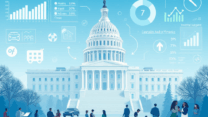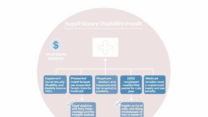
Small Business Loan Support: Government Programs You Should Know
How to Use Government Loan Guarantees Effectively

Government loan guarantees can be a powerful tool for small business owners looking to secure financing, especially when traditional lenders are hesitant due to limited credit history or collateral. These guarantees reduce the lender’s risk by ensuring that a portion of the loan will be repaid by the government if the borrower defaults.
To use government loan guarantees effectively, start by understanding the key programs available. In the U.S., the Small Business Administration (SBA) offers several loan guarantee programs, such as the 7(a) Loan Program and the 504 Loan Program. These are designed to support different business needs, from working capital to real estate and equipment purchases.
Here are a few tips to make the most of these guarantees:
1. Choose the Right Program: Each SBA loan program has specific eligibility requirements and benefits. For example, the 7(a) loan is versatile and widely used, while the 504 loan is ideal for fixed asset investments.
2. Work with an SBA-Approved Lender: Not all banks participate in SBA lending. Look for lenders experienced in SBA loans to streamline the application process and improve your chances of approval.
3. Prepare a Strong Business Plan: Lenders and the SBA will evaluate your business’s potential for success. A clear, detailed business plan with financial projections can significantly boost your credibility.
4. Understand Your Responsibilities: Even with a government guarantee, you are still responsible for repaying the loan. Defaulting can impact your credit and future financing opportunities.
5. Leverage Additional Resources: The SBA and local Small Business Development Centers (SBDCs) offer free counseling and training to help you navigate the loan process and grow your business. You can explore more at the official SBA website: https://www.sba.gov/funding-programs/loans
Using government loan guarantees wisely can not only help you secure the funding you need but also build a solid financial foundation for your business’s future.
Step-by-Step Guide to Applying for Federal Lending Programs

Navigating federal lending programs can feel overwhelming, but with the right guidance, small business owners can access vital funding to grow and sustain their operations. These programs, often backed by the U.S. Small Business Administration (SBA), are designed to reduce the risk for lenders and make it easier for entrepreneurs to secure loans.
Here’s a clear, step-by-step guide to help you apply for federal small business loan programs:
1. Identify the Right Loan Program: Start by exploring federal loan options such as the SBA 7(a) Loan Program, SBA 504 Loan, and Microloan Program. Each serves different business needs—whether it’s working capital, equipment purchase, or real estate investment. You can learn more about these programs on the official SBA website: https://www.sba.gov/funding-programs/loans
2. Check Eligibility Requirements: Each program has specific criteria regarding business size, industry, and financial health. Review these carefully to ensure you qualify before applying.
3. Prepare Your Documentation: Gather essential documents such as your business plan, financial statements, tax returns, and personal background information. Lenders will use these to assess your creditworthiness and repayment ability.
4. Choose a Lender: SBA loans are issued by approved lenders. Use the SBA’s Lender Match tool to find a participating lender near you. Building a relationship with your lender can also help you better understand the process and improve your chances of approval.
5. Submit Your Application: Complete the loan application with accurate and detailed information. Be prepared to answer follow-up questions or provide additional documentation if requested.
6. Follow Up and Prepare for Approval: After submission, stay in contact with your lender. If approved, review the loan terms carefully before signing. If denied, ask for feedback and consider reapplying or exploring alternative funding options.
By following these steps, you can increase your chances of securing a federal loan that supports your business goals. Remember, preparation and persistence are key to success in the lending process.
Top U.S. Government Funding Options for SMEs in 2024

In 2024, small and medium-sized enterprises (SMEs) in the U.S. have access to a variety of government-backed funding programs designed to support growth, innovation, and resilience. Understanding these options can help business owners make informed financial decisions and secure the capital they need to thrive.
1. SBA 7(a) Loan Program
The SBA 7(a) loan is the most popular loan program offered by the U.S. Small Business Administration. It provides up to $5 million in funding for working capital, equipment, or real estate. The government guarantees a portion of the loan, reducing the risk for lenders and making it easier for small businesses to qualify.
2. SBA 504 Loan Program
Ideal for businesses looking to purchase fixed assets like buildings or machinery, the SBA 504 loan offers long-term, fixed-rate financing. It involves a partnership between a private lender and a Certified Development Company (CDC), with the SBA guaranteeing a portion of the loan.
3. Small Business Innovation Research (SBIR) and Small Business Technology Transfer (STTR) Programs
These programs provide funding for small businesses engaged in research and development with the potential for commercialization. They are especially beneficial for tech startups and companies in scientific fields. Funding is non-dilutive, meaning you don’t give up equity.
4. USDA Business & Industry Loan Guarantee Program
For rural businesses, the U.S. Department of Agriculture offers loan guarantees to improve access to capital. This program supports job creation and economic development in rural areas by reducing lender risk.
5. State and Local Grants
Many states and municipalities offer grants and low-interest loans tailored to local economic development goals. These can be industry-specific or targeted toward underserved communities.
6. Community Development Financial Institutions (CDFIs)
CDFIs are private financial institutions that provide loans and financial services to underserved markets. Many receive federal funding and offer more flexible terms than traditional banks.
Each of these programs has its own eligibility requirements and application processes, so it’s important to research thoroughly and consult with a financial advisor or local SBA office. For more information, visit the official SBA website: https://www.sba.gov/funding-programs/loans
By tapping into these government resources, small business owners can gain a competitive edge, improve cash flow, and invest in long-term success.
Key Reminders When Applying for Federal Grants or Guarantees

When applying for federal grants or loan guarantees as a small business owner in the U.S., it’s important to understand the key steps and requirements to increase your chances of approval and avoid delays. These programs, often administered by agencies like the Small Business Administration (SBA), are designed to support business growth, especially during challenging economic times.
First, ensure your business meets the eligibility criteria. This typically includes being a for-profit business, operating in the U.S., and meeting size standards defined by the SBA. Next, gather and organize all required documentation. This may include your business plan, financial statements, tax returns, and details about how the funds will be used.
Be aware of deadlines and application windows. Federal programs often have specific timeframes, and missing them can mean waiting months for the next opportunity. Also, take time to understand the terms of the grant or guarantee—some may require matching funds or have specific reporting obligations.
One of the most common mistakes applicants make is not registering with the System for Award Management (SAM.gov), which is required to apply for most federal grants. Registration is free, but it can take time, so start early. You can register and find more information at https://sam.gov.
Finally, consider reaching out to your local Small Business Development Center (SBDC) or SCORE chapter for free guidance. These organizations can help you review your application and ensure it meets federal standards.
By staying organized, informed, and proactive, you can navigate the federal funding process more smoothly and access the support your business needs to thrive.







